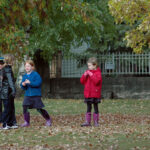Home »

Public help needed to find bat roosts and count bats

BC Annual Bat Count contributes to monitoring for impacts of white-nose syndrome across the province
Spring is here and bats are returning to summer roost sites. One of our more familiar species in buildings and bat boxes is the Little Brown Myotis.
Like all B.C. bats, the Little Brown Myotis is an essential part of our ecology, consuming many insect pests each night. Unfortunately, the Little Brown Myotis is now endangered in Canada. In fact, bats in B.C. suffer from many threats, and almost half of our 15 species are ‘at-risk’.
A simple way to support bats including the Little Brown Myotis and other bats is to participate in the BC Annual Bat Count this June. The BC Community Bat Program is requesting colony reports and volunteer assistance for this citizen-science initiative that encourages residents to count bats at local roost sites.
Bat counts are easy, fun, and safe, not to mention vital for monitoring bat populations.
“The counts are a wonderful way for people to get outside, respect social distancing guidelines, and be involved in collecting important scientific information,” said biologist Elodie Kuhnert, coordinator of the Kootenay Community Bat Program.
Volunteers wait outside a known roost site, such as a bat-box, barn, or attic, and count bats as they fly out at twilight. Ideally, one to two counts are done between June 1 and 21 before pups are born, and one to two more between July 11 and August 5 when pups are flying.
See this video of how to do a bat count.

In 2020, the Annual Bat Count collected baseline data on bat populations at 362 sites across the province, and hopes to monitor these sites and more for 2021. The count data helps bat biologists understand bat distribution and normal variation in colony sizes before our bats face impacts from a devastating bat disease called White-nose Syndrome.
White-nose syndrome is an introduced fungal disease, fatal for bats but not for other animals or humans. Not yet identified in B.C., the disease continues to spread in Washington State, less than 150 km from our border. Results from the Bat Count may help prioritize areas in B.C. for research into treatment options and recovery actions.
“We know relatively little about bats in B.C., including basic information on population numbers” continued Kuhnert. “This information is more valuable than ever, particularly if it is collected annually. If people want to get involved but don’t have a roost site on their property, we will try to match them with a roost site nearby.”
The Annual Bat Counts offer a safe way to learn about bats and share knowledge, while contributing to bat conservation efforts.
Funded by the Habitat Conservation Trust Foundation, the Forest Enhancement Society of BC, the Habitat Stewardship Program, the Wildlife Conservation Society Canada, the Columbia Basin Trust and the Kootenay Lake Local Conservation fund, and with support of the BC Conservation Foundation and the Province of BC, the BC Community Bat Program provides information for people dealing with bat issues on their property or who have questions about how to attract bats.
To find out more about bat counts or white-nose syndrome, to report a dead bat, or to get assistance dealing with bat issues, visit www.bcbats.ca or call 1-855-9BC-BATS ext. 14 or email at [email protected].

Lead image: The Little Brown Myotis occurs across B.C. but is threatened by white-nose syndrome, a bat disease. Photo: B Paterson. Images submitted by Kootenay Community Bat Project
Kootenay Community Bat Project







